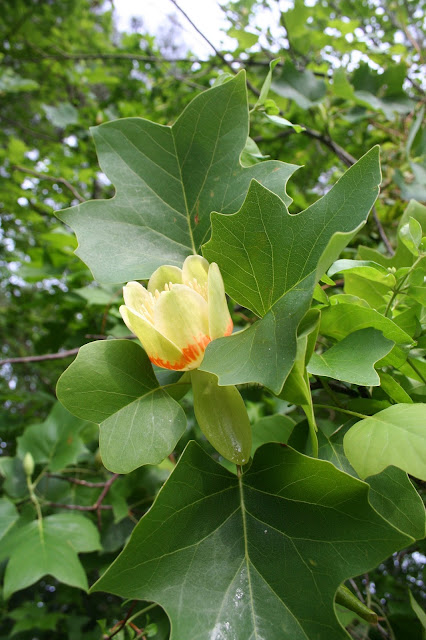Known variously as tuliptree, tulip poplar, yellow poplar, canoewood, or simply poplar, the American tulip tree is my favorite deciduous tree. Its smooth, straight trunk, towering height and impressive girth have long distinguished it as royalty in the great eastern forests of North America. In the rich cove forests of the Great Smoky Mountains, specimens may exceed twenty feet in girth, and some individuals exceed 170 feet in height.
Right here in the Sandhills, the mature tulip tree will consistently be the tallest tree in a wood where it is found, but more significantly at this time of year, it is the only tree whose branches are adorned with masses of pale green, orange and yellow tulip blossoms!
The genus name, Liriodendron, literally means "Lily Tree," but the tulip poplar is not closely related to either lilies or tulips. Despite that little technicality, "the eyes don't lie," and folks in the south can see well enough to know when they're confronted with a tulip tree.
If you're out and about over the next few weeks, keep your eyes on the forest edge and perhaps you'll spy some tulips in the trees. Its distinctive, squarish, four-lobed leaves are unmistakable, and they turn a brilliant yellow in the late summer, making the tulip tree a year-round standout in our neck of the woods.
Hoot Owl Karma has noticed a few other trees in bloom this week as well, so we'll try to share a few more bark-skinned bloomers in the week ahead. In the meantime, go outside, take a look around, and relish your place in the natural world.





Jimmy,
ReplyDeleteI would like to use one of these photos, but cannot find an email for you. Can you please contact me today and let me know how I can reach you.
Shawna